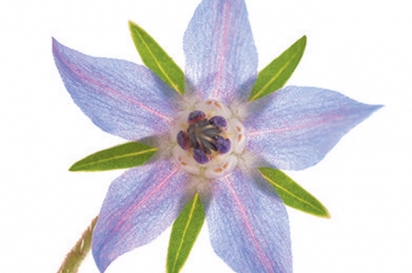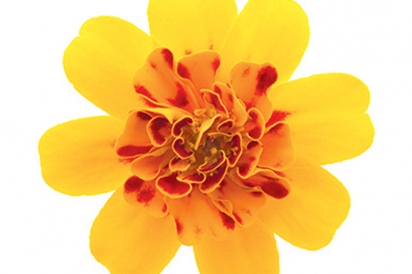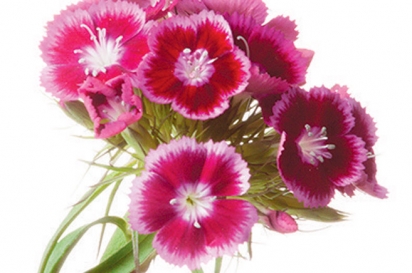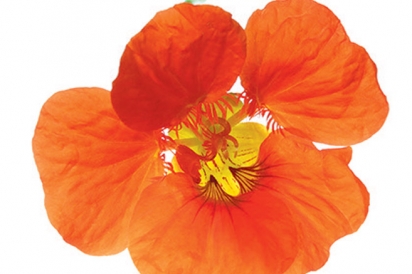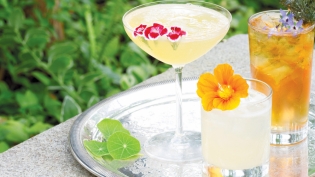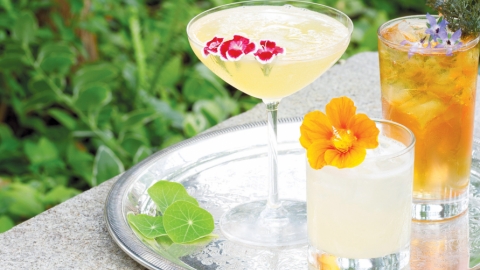A Cocktail Garnish Guide
The Eye Candy and Flavor Boosters for an Endless Summer of Options
Every summer we anticipate the extraordinary rainbow of fresh fragrant herbs and edible flowers in the garden. The flavors of edible blossoms range from perfumey and sweet to earthy and astringent. Dozens of edible flowers and spicy-sweet flowering herb stalks show their blossoms during the summer and it takes just a little practice spotting them. Never mind if your arugula, kale and cilantro (coriander) are bolting—even the most unassuming humble edible blossoms from your garden can steal the show at cocktail time.
Let this introductory guide welcome you to the flavorful realm of edible blossoms and their ability to transform simple dishes and cocktails into works of art. Just remember: When using edible garnish, don’t guess. Make sure you know that your garnishes match those in our guide or that they come from a reliable source. Keep your cocktails free from pesticides; grow or buy organic blooms.
Borage (Borago officinalis). The vibrant blue and pink blossoms of borage are imbued with a light cucumber flavor. Lee Ann Freitas lovingly refers to it as a “commitment plant” because it self-seeds year after year. Pair with gin-based cocktails or cocktails that call for cucumber or fresh lime. The pink-purple blossoms are especially rare and are considered good luck when picked and eaten fresh.
Calendula (Calendula officinalis). This is a dynamic herb used to soothe the skin. The blossoms come in shades of white, strawberry blonde, yellow and orange. The petals taste lightly floral and earthy with a hint of citrus. Scatter the petals confetti-style over vodka, rum and gin sours, salads and soft cheeses.
Marigold (Tagetes erecta). These bright orange-yellow flowers have a pungent floral fragrance that pairs with whiskey, brandy and aged rum. Marigolds complement aromatic notes of vermouth and bitters-forward cocktails like Old-Fashioneds and Manhattans. Marigold is a natural dyeing agent nicknamed “poor man’s saffron” that tints rice and grain dishes with a golden hue. Infuse petals in simple syrup to add spicy floral notes, color and acidity.
Nasturtium (Tropaeolum majus). These blossoms range from flashy reds and oranges to shades of coral, yellow and ivory. The blossoms, leaves and seed pods are peppery and piquant, reminiscent of watercress leaves. Nasturtiums pair splendidly with vodka, tequila and mezcal. Infuse vodka with the leaves for a savory Dirty Martini or Bloody Mary. Pickle seed pods for a festive alternative to capers, cocktail olives and onions. Garnish salads and cheese plates with the blossoms.
Sweet William (Dianthus barbatus interspecific). This Dianthus, with its clusters of frilly white, pink, red and purple flowers, has a sweet clove-like scent. Pair with rumbased cocktails and drinks that need a hint of spice. A great addition to tiki-style cocktails that contain bitters, fresh tropical fruit and coconut. Use as a garnish for recipes that call for nutmeg, cinnamon, ginger or clove.



